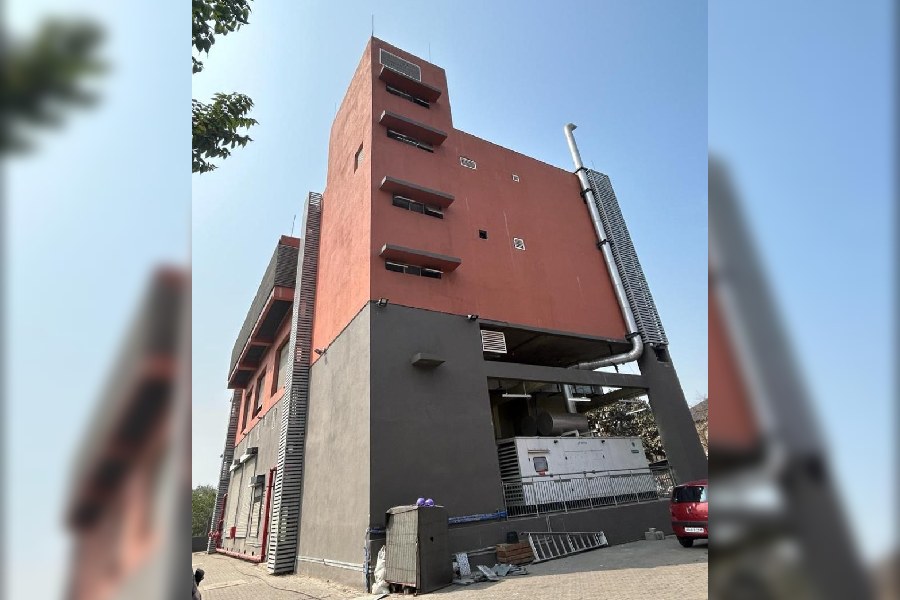Passengers of East-West Metro trains will have to climb 273 stairs — 12 storeys — to safety through a ventilation shaft on Strand Road in the event of an emergency in the tunnel under the Hooghly.
Passenger services on the Esplanade-Howrah Maidan stretch of East-West Metro will start on March 15. Currently, the trains in the east-west corridor run between Sector V
and Sealdah.
Metro takes a look at the passenger safety systems that would be in place to tackle any emergency inside the tunnel.
Shaft
The evacuation/ventilation shaft on Strand Road is 43.5m deep, equal to a 15-storeyed building, including the undercroft. Officials of the Kolkata Metro Rail Corporation (KMRC), the implementing agency of the east-west corridor, said the shaft is the deepest of all evacuation/ventilations shafts in underground railway projects in India.
Passengers will have to climb 36m — 12 storeys — from the walkway along the tunnel to the level of Strand Road.
“The flight of stairs has landings where passengers can catch their breath while climbing up. Elevators cannot be used for safety reasons during evacuation. So, the provision has not been kept,” said Tamal Biswas, project manager, Afcons Infrastructure, the company that was given the contract for the construction of the stretch between Howrah Maidan and Esplanade.
The shaft is connected to the two tunnels through two cross-passages with fire-proof doors.
“This is the only ventilation-cum-evacuation shaft between Howrah Maidan and Esplanade,” said a KMRC official.
According to the National Fire Protection Association guidelines, there should be a passenger evacuation system — either through a station or in the form of a shaft or a cross-passage — every 762m.
“The distance between Howrah and Mahakaran stations is almost 2km. So, we decided to build the shaft on Strand Road,” said Biswas. The distance between the shaft and the Howrah station is 760m.
Cross-passage
There are eight cross-passages connecting the two parallel tunnels between Howrah Maidan and Esplanade. There are three between the Howrah Maidan and Howrah stations and five between the Strand Road shaft and the Mahakaran station.
The cross-passages are equipped with fire-proof doors, said an official. If there is a fire in one tunnel, passengers can be brought down from the train and taken to the other tunnel through a cross-passage.
Each of the cross-passages is 3m wide. The length varies between five and 12m depending on the distance between the two tunnels at that point, said the official.
“A cross-passage could not be built under the Hooghly because of safety reasons. If holes are punctured, there will be a risk of river water entering the tunnels,” said Biswas of Afcons.
Passenger walkways
Unlike the north-south Metro, the tunnels here have walkways for passengers. In case they have to get off the train midway, they will not have to walk through the tracks.
“The walkways are about 2ft wide and have handrails which passengers can hold during evacuation,” said Biswas. “There are also emergency pathway lights to guide passengers.”






